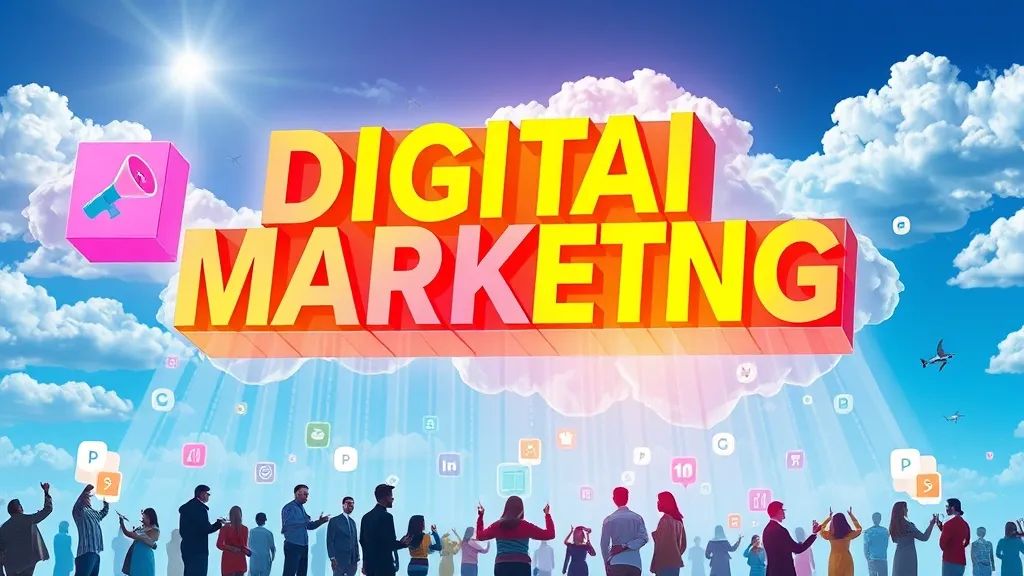Decoding the Alphabet Soup: From SEO to UX
Alright, let’s dive into the wild world of digital marketing lingo! You’ve probably heard a ton of buzzwords tossed around like confetti at a parade—SEO, UX, PPC, and the list goes on. It can feel like trying to decode a secret language, right? But don’t worry, I’m here to break it down without making your head spin.
First up, we’ve got SEO, or Search Engine Optimization. Think of it as the magic fairy dust that helps your website appear on Google’s first page. It’s all about using the right keywords, optimizing your content, and making your site easy for search engines to crawl. If you’re not doing SEO, it’s like throwing a party and forgetting to send out invites. Nobody’s gonna show up!
Then there’s PPC—Pay-Per-Click advertising. This is when you pay for your website to show up at the top of search results (hello, Google Ads!). It’s kinda like renting a billboard on the digital highway. Sure, it costs money, but it can drive traffic to your site faster than you can say “conversion rate.” Just be careful not to get too caught up in it; you don’t want to end up tossing cash like confetti!
Now onto UX, which stands for User Experience. This one’s all about how users feel when they visit your site. Is it easy to navigate? Do they find what they need without getting lost in a maze? If they’re frustrated, they’ll bounce faster than a rubber ball. Good UX is like a comfy couch—everyone wants to hang out there, and you want to keep ‘em coming back!
But it’s not just about the techy stuff. Understanding these terms is crucial, but it’s also about how you apply them. You can have the best SEO strategies, but if your UX is terrible, people won’t stick around long enough to notice. It’s like serving a five-star meal on a wobbly table—no one’s gonna enjoy it if they’re worried about spilling their drink!
So, while you’re navigating this alphabet soup of digital marketing, remember to keep things balanced. SEO, PPC, UX—they all work together like a well-oiled machine. And hey, if you ever feel overwhelmed, just think of it as learning a new language. One term at a time, and soon you’ll be fluent in digital marketing speak!
The New Wave of Engagement: Understanding Micro-Influencers and Beyond
Okay, so let’s dive into the world of micro-influencers. You’ve probably heard the term floating around like that one weird meme everyone keeps sharing. But what’s the deal with these folks? Well, micro-influencers are basically social media users who have a smaller but super-engaged following, usually ranging from a few hundred to about 100,000 followers. It might not sound like much compared to those mega influencers with millions of fans, but trust me, there’s some serious magic happening here.
Why should brands care about micro-influencers? For starters, they tend to have a more authentic connection with their audience. It’s like having a conversation with a friend rather than listening to a celebrity tell you to buy a product. People genuinely trust these micro-influencers, which means they’re more likely to act on their recommendations. It’s kinda like when your friend raves about a new coffee shop—you’re way more likely to check it out than if some random celebrity mentions it in passing.
- Authenticity: Micro-influencers usually share their honest opinions and experiences, which resonates with their followers.
- Engagement: They often have higher engagement rates. A small community can create a big impact.
- Cost-Effective: Working with these influencers is usually cheaper than hiring a big-name star. Hello, budget-friendly!
But wait, there’s more! As the digital landscape shifts, we’re seeing a rise in what I like to call “nano-influencers.” These are even smaller folks, often with less than 1,000 followers. Sounds crazy, right? But their engagement rates can be through the roof. It’s all about niche communities and hyper-focused content. If you’re selling handmade soaps, for example, teaming up with someone who only talks about natural skincare could be a goldmine.
In this new wave of engagement, brands are realizing that it’s not just about numbers; it’s about connection. So, if you’re still thinking bigger is always better, it might be time to rethink that strategy. Micro- and nano-influencers could be the secret sauce to your marketing recipe. Who knew that a smaller audience could pack such a punch? Just imagine the possibilities!
Data-Driven Decisions: Navigating the Analytics Jungle
Alright, let’s dive into the wild world of data-driven decisions—where numbers and insights come together like peanut butter and jelly. If you’re in digital marketing, you probably know that data is like the secret sauce that makes everything work just a bit better. But seriously, it can feel like trying to find your way through a jungle sometimes, right?
First off, what do we mean by being data-driven? It’s all about using data to guide your decisions instead of just going with your gut. Now, don’t get me wrong, intuition has its place (like when you know that one friend always eats the last slice of pizza), but relying solely on it can lead you down some sketchy paths. So, how do you start navigating this analytics jungle?
- Know Your Metrics: It’s crucial to understand which numbers actually matter. Are you looking at page views? Conversion rates? Bounce rates? Each metric tells a different story, so pick the ones that align with your goals. You don’t want to be that person who gets lost in the details.
- Set Clear Goals: Before you even look at data, set some clear objectives. Want to boost sales? Increase engagement? Knowing what you’re aiming for helps you sift through the noise and focus on what’s important.
- Use the Right Tools: There are tons of analytics tools out there. Google Analytics is like the Swiss Army knife of digital marketing. But don’t get overwhelmed. Pick a few tools that fit your needs and get comfy with them. Trust me, it’ll make your life a whole lot easier.
- Iterate and Optimize: Once you’ve got data coming in, don’t just sit there. Use it to tweak your strategies. Test, learn, and adapt. It’s kind of like adjusting the seasoning in your favorite recipe—you want it to taste just right.
And let’s not forget about the human side of things. Data is great, but it’s the stories behind the numbers that really matter. Listen to your audience, engage with them, and let their feedback guide your decisions. After all, they’re the reason you’re doing this in the first place!
In conclusion, navigating the analytics jungle might seem daunting, but with the right mindset and tools, you can turn those raw numbers into actionable insights. It’s all about making informed decisions and embracing the journey. So grab your virtual machete, and let’s cut through that data jungle together!
Future-Proofing Your Strategy: Embracing AI and Automation
Alright, let’s chat about something that’s buzzing around the digital marketing world: AI and automation. I mean, who isn’t talking about it these days? If you’re not, you might wanna check your social media feeds or maybe just step outside for some fresh air. Seriously, it’s everywhere!
So, why should you care about AI? Well, think about it like this: the digital landscape is evolving faster than a cat video going viral. It’s all about keeping up with trends, and AI is kinda like that friend who always knows the hottest new spots to eat. You want that friend on your side! By incorporating AI tools into your strategy, you’re not just keeping up; you’re actually getting ahead.
Automation, on the other hand, is like having a personal assistant that never sleeps. Imagine scheduling your social media posts or sending out marketing emails without lifting a finger. Sounds dreamy, right? With automation, you can focus on the creative side of things—like brainstorming that next big campaign or figuring out why your cat keeps knocking over your plants.
- Efficiency: AI can analyze data faster than you can say “target audience.” It helps you understand your customers better, which means you can create tailored content that actually resonates.
- Cost-Effective: Sure, there’s an upfront investment, but in the long run, it can save you a ton of cash. You won’t need a whole team for tasks that a smart tool can handle.
- Scalability: As your business grows, so do your marketing needs. AI and automation make it way easier to scale your efforts without losing quality.
But hey, let’s not get too carried away. While AI and automation are incredible, they’re not magic wands. They can’t replace the human touch that makes marketing relatable. You still need to inject your brand’s personality into everything you do. It’s like seasoning your food; too much salt, and it’s a disaster. A little sprinkle of human creativity goes a long way!
In conclusion, as we tiptoe into 2025, embracing AI and automation isn’t just a smart move—it’s almost a necessity. It’s about future-proofing your strategy and making sure you’ve got all the right tools in your marketing toolbox. And who wouldn’t want that?

